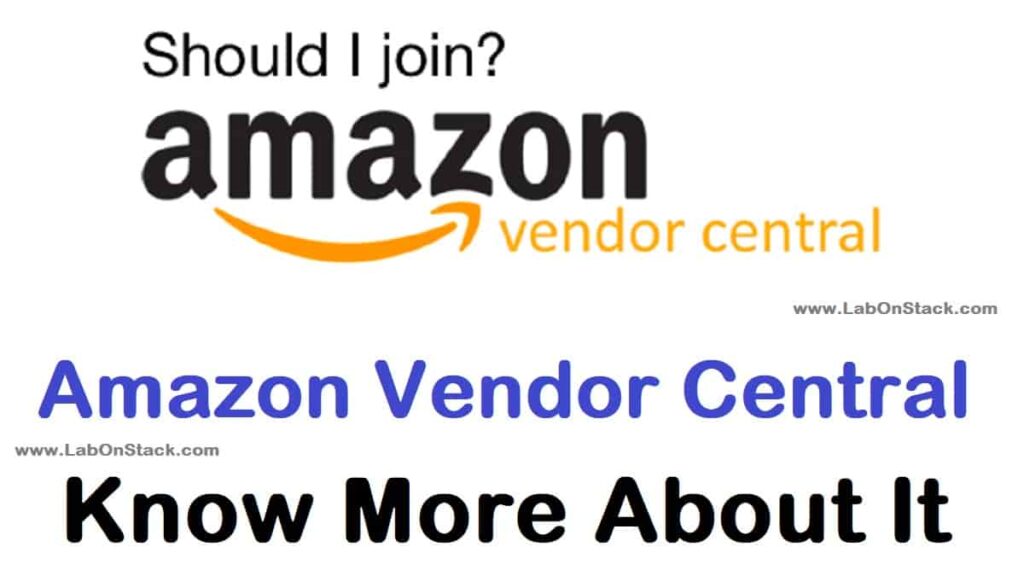We put together this article to outline the strengths and weaknesses of both seller and vendor central and to help you decide if you should have one, the other, or even both. Are your products selling like smartphone, and more on Amazon? Are you a frustrated vendor looking to make the switch to Seller Central? Has an Amazon buyer contacted you about selling via Vendor Central?

What Is Vendor Central?
A tell-tale sign that a company is selling through Vendor Central is the phrase “ships from and sold by Amazon.com.” Registration on Vendor Central is by invitation only. Amazon Vendor Central is the web interface used by manufacturers and distributors. You’re acting as a supplier, selling in bulk to Amazon. If you sell via Vendor Central, you’re called a first-party seller.
Amazon Vendor Central Pros
Simplified Business Model
As a vendor, your primary focus is on filling purchase orders, billing, and avoiding chargebacks. The process of “doing business” with Amazon is simpler through Vendor Central than through Seller Central. As a seller, especially utilizing FBA, you will be responsible for sales reconciliation, lost inventory, and taxation liabilities.
Expanded Advertising Opportunities
Vendor Central users have more robust options when it comes to running AMS ad campaigns. Amazon Marketing Services (AMS) gives brands a powerful tool with multiple options for getting their products in front of shoppers. Strategically managing campaigns and tying keywords into product page content is crucial for success. AMS allows vendors to drive demand with keyword-targeted ad campaigns designed to increase traffic to Amazon product pages.
Consumer Confidence
That seal of approval can provide a boost in consumer confidence that you don’t have as a third-party merchant. Having your products sold as a first-party seller through Vendor Central means that, as far as shoppers are concerned, your product is being “sold by Amazon.”
Other Marketing Tools
Consumers value what other consumers have to say far more than they do advertisements, so user-generated content can translate into a sales boost. You also have the ability to participate in promotional programs such as Subscribe & Save and Amazon Vine, in which your product is sent to top reviewers before it ever hits the shelves.
Amazon Vendor Central Cons
Pricing Control
Amazon can and will adjust retail pricing at any time based on internal data. Amazon does not strictly follow the Minimum Advertised Pricing (MAP) guidelines from manufacturers.
Logistical Requirements
Vendors that struggle with maintaining stock and/or quickly fulfilling orders open themselves up to significant chargebacks. Amazon has very specific and rigid guidelines for filling their purchase orders.
Seller Central Vs Vendor Central
| Seller Central | Vendor Central |
|---|---|
| Sell directly to Amazon’s customers | Sell to Amazon |
| Open to anyone | Invite only |
| Quick payment terms | Traditional payment terms |
| Flexible logistical options | Fixed logistical options |
| Limited advertising options | Multiple advertising options |
| Brand controls retail pricing | Amazon controls retail pricing |
| Enhanced Brand Content | A+ content |
| Complex sales process | Traditional sales process |
Conclusion
It’s critical that you create a marketing strategy specific to Amazon. we are biased towards Vendor Central as it allows our clients to take full advantage of Amazon’s powerful marketing tools such as Amazon Marketing Services and A+ content. In many ways, Amazon is more important than Google. If brands haven’t created a strategy to reach these shoppers, they’re missing out on a major piece of the ecommerce market.
You May Also Like,
Best 7 Amazon Price Tracker Tools
Tips To Submit an Android App To The Amazon App Store